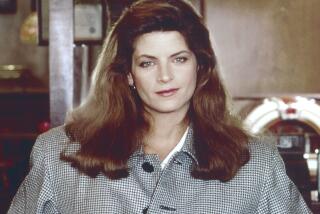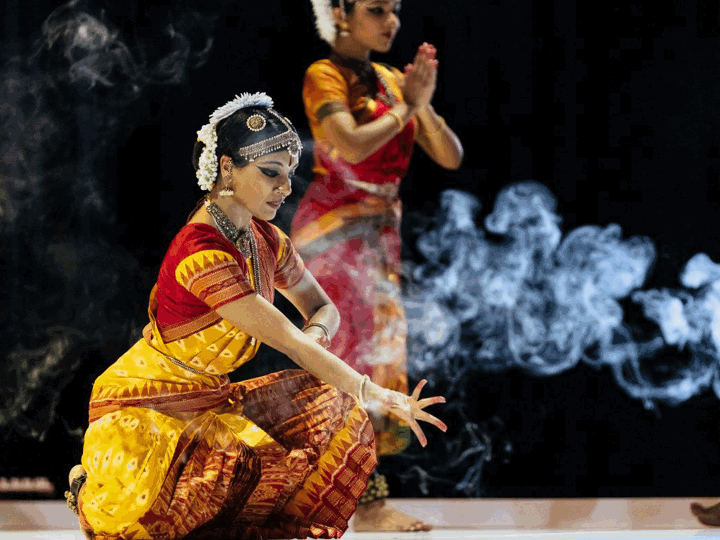Alvin Ailey II, With More Room to Update His Legacy
- Share via
Five women wearing red-lame evening gowns and blond wigs aggressively preen, pose and stroke themselves throughout the opening scene of Alvin Ailey’s 1968 “Quintet,” lip-syncing to Laura Nyro’s upbeat “Stoned Soul Picnic” and selling sex-as-commodity for all it’s worth. Gradually, however, their exaggerated public come-on yields to brief displays of private needs--and, soon after, dramatic solos to Nyro ballads explore their emotions fully and explain why they’ve adopted red-lame as protective coloration.
Performed by Ailey II at Pepperdine University in Malibu on Saturday, “Quintet” not only treats pop culture as camouflage but shows the self-celebration pervading ‘60s rock as a big lie--a daring artistic strategy in that era.
If you’ve never heard of the work, it may be because the big, world-famous Alvin Ailey American Dance Theatre usually performs a small sampling of Ailey masterworks: mostly “Night Creature,” “Blues Suite,” “Cry,” “Revelations” and maybe “Memoria.”
That leaves lots of room for AII, a smaller, younger offshoot formerly named the Alvin Ailey Repertory Ensemble. Directed by Sylvia Waters, the company brought its capacity Malibu audience a four-part program that not only offered a pair of Ailey rarities but two atmospheric works by women choreographers that updated his legacy in form and content.
For starters, former Ailey colleague and dance star Carmen de Lavallade contributed “Nightscape,” a solo to an intense Ginastera concerto that gave Angelica Salazar constant technical challenges and demanded a mysterious, even mythic quality, as if she were portraying a moon-goddess.
A principal in the Frankfurt Ballet, Francesca Harper choreographed what amounted to a modern-dance translation of the signature Forsythe-style of that renowned ensemble, from the casual linkups between dancers that formed the structure of her piece down to its industrial thump-and-wheeze score by Rolf Ellmer.
Titled “Sensory Feast,” it gave eight dancers wearing mostly black shorts and leather tops a dense network of unusual partnering gambits embellished with strange arm-semaphores, finger-ripples and upper-body twitches. The result placed everyone in an impulse-driven action zone where loss of control and engulfing violence seemed imminent.
Ailey’s 1983 “Escapades” completed the program, its Max Roach jazz score as fresh as ever but its virtuosic fusion of classical and contemporary vocabularies a little beyond the capabilities of a hard-working cast led by the powerful Odara Jabili-Nash and the elegant Nelson Cabassa.
However, the performance allowed the audience to see connections between Ailey’s most celebrated works and his less familiar creations. Circular groupings around a stationary soloist hearkened back to “Memoria” from 1979, just as his facets-of-woman focus and use of Nyro in “Quintet” prefigured the theme and some of the accompaniment of “Cry.”
Ailey is usually viewed as a phenomenon in American dance but it in no way detracts from his greatness for Ailey II to honor him this way as a working artist--refining and developing his creativity--with some masterworks behind him and some just ahead.
More to Read
The biggest entertainment stories
Get our big stories about Hollywood, film, television, music, arts, culture and more right in your inbox as soon as they publish.
You may occasionally receive promotional content from the Los Angeles Times.










